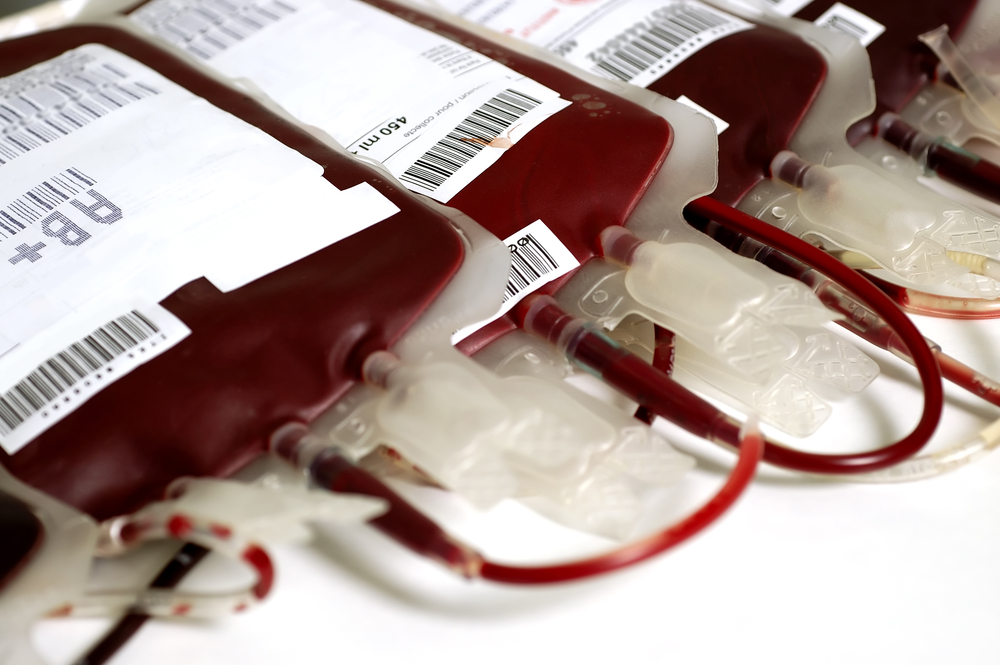
Authored by: Sumit Bagaria, MD, Indian Foundation for Safe Blood

Sumit Bagaria, MD, Indian Foundation for Safe Blood
Although blood transfusions are considered life-saving, unsafe blood transfusions can at times be life-threatening. As published in the Times of India, more than 20,000 patients were infected with HIV due to unsafe blood transfusion in the past 11 years. Apart from HIV, other dilapidating diseases such as Hepatitis B and C can also pass through blood from an infected donor to a recipient.

The spread of infections through blood transfusions increasing by the day is creating an alarming situation. While we hear of HIV cases in newspapers every day, many victims being children or Thalassemics, someone in my own family got Hepatitis C, while Amitabh Bachchan got Hepatitis B “ all through blood transfusions.
Blood donation is a noble act and it should be encouraged. However, blood banks should be properly equipped to test each unit of donated blood and ensure that only the safe blood is transfused to a patient. According to National Blood Policy (based on a Supreme court judgement that put the onus of providing safe blood on the Government), every unit of blood that is donated at a blood bank should be thoroughly checked and tested to ensure that the blood does not contain any viruses or other infection.
Despite this, every other day there are cases of people getting infected through blood transfusion. This is mainly due to the testing method called ELISA (Serology) used in most blood banks that has some limitation to detect very early stages of infection in a donated blood unit. So, if a person who is in an early stage infection of HIV or Hepatitis and he/she donates blood, there is a higher risk of ELISA test failing to detect the infection in that blood unit due to very low concentration of viruses or antibodies present in the blood unit. However, when that blood unit is transfused to a recipient, the viruses will multiply in the recipients body thus infecting that person.

How can we tackle this problem?
There should be a multi-pronged strategy to tackle this. Regular repeat voluntary blood donations, better screening and counselling, tracking blood donors, hemovigilance etc are some of the measures. However, in a country as vast as India, with a fragmented blood transfusion system (close to 2900 blood banks), over 1.3 billion people with cultural issues, myths and superstitions about blood and blood donations, and minimum testing standards, it requires unique measures. What mobile phones did to our telecom sector, technology can do for safer transfusion. App based systems focusing on demand and supply, geographic proximity of donor and blood bank, AADHAR based tagging of donors etc. on one side to increase regular repeat voluntary donors combined with the latest advances in screening and inactivation for viruses and other pathogens on the other, can almost end the chances of an infected sample being transfused. One of the latest and most effective medical techniques is the IDNAT method of screening blood.
What is ID-NAT ?
ID-NAT (individual Donor “ Nucleic Acid Testing) is an international standard blood screening test where scientific evidence has shown that it has caught many cases of HIV and Hepatitis B and C infections that were not detected by conventional ELISA tests. It is a method of testing blood that is more accurate and detects early stage infections also. By detecting earlier than conventional tests it decreases the possibility of transmission of infection via transfusion.
Dr Dhinesh Kumar, Senior Specialist- Transfusion Medicine, Aster Medcity, Kochi, “ID-NAT is a direct and effective way of testing; which is proven to be more sensitive in identifying the infected units. Using ID-NAT, we ensure that every blood unit which gets transfused is made as safe as possible.”
This test which is mandatory in many countries, continues to be an optional test in India. But, there are a few hospitals and blood banks in India which have realised the importance of ID-NAT testing and have adopted this technique to screen blood. Centres in India, who have adopted this technique, include AIIMS New Delhi and Jodhpur, ,Gangaram Hospital, Indraprastha Apollo and Fortis Hospitals in New Delhi, Medanta- The Medicity Gurgaon, PGI Chandigarh, Hinduja, HN and Ambani Hospitals in Mumbai, Narayana Hrudayalaya Bangalore, CMC Vellore, SIMS Chennai, Amrita Institute Kochi etc. Also, Karnataka Government is the only State Government in India which has made ID-NAT mandatory in all government hospitals and blood banks. Recently, Stanley Medical College, Chennai has also commenced ID-NAT testing.
Dr Anand Deshpande, Consultant- Transfusion Medicine & Hematology, P D Hinduja National Hospital & MRC, Mumbai, We have been using ID – NAT in our institute for testing donor blood units since 2009. It is a major step towards blood safety as it detects very low number of copies of viral DNA / RNA even when conventional serology tests are non reactive.It also helps to detect Occult Hep B infections.
Be a part of Elets Collaborative Initiatives. Join Us for Upcoming Events and explore business opportunities. Like us on Facebook , connect with us on LinkedIn and follow us on Twitter , Instagram.











